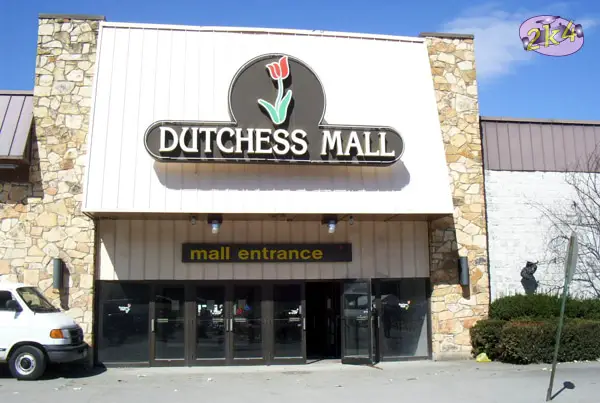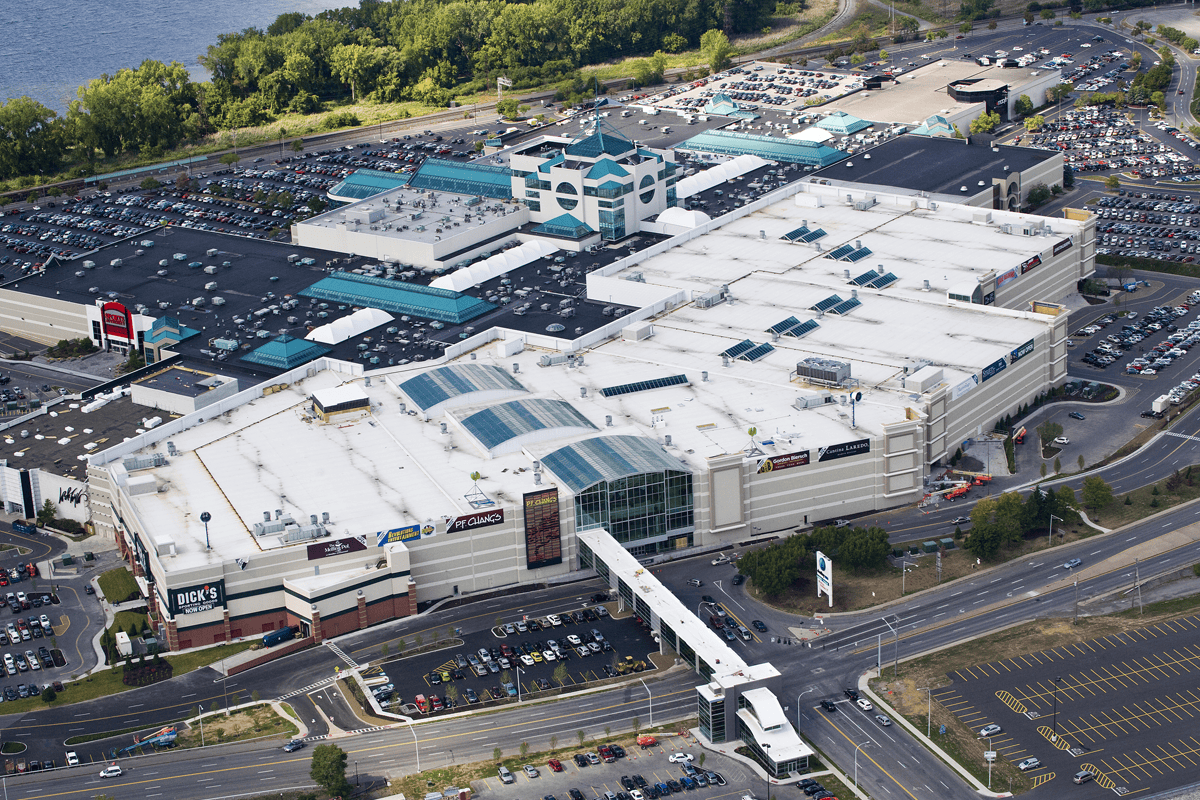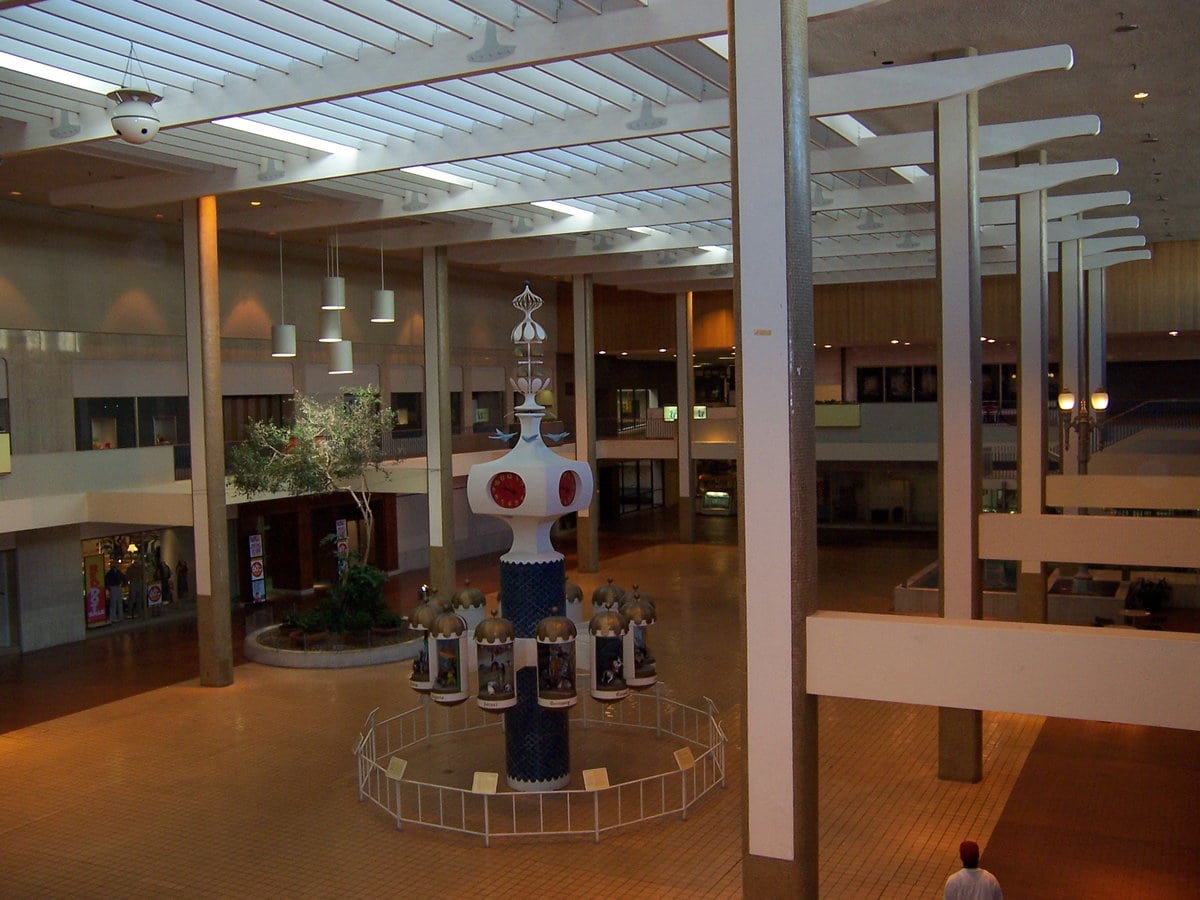Early Retail Boom and the Birth of Dutchess Mall (1974-1980s)
Dutchess Mall opened in 1974, bringing the first enclosed shopping center to Dutchess County, New York.
At the time, the region lacked a large-scale retail hub, making the mall a big deal for shoppers between Yonkers and Albany.
Built on land once used by the Fishkill Encampment and Supply Depot during the American Revolutionary War, the mall sat near the historic Van Wyck Homestead.
Plans once floated to turn the site into a national park, but instead, developers pushed forward with the idea of a modern shopping complex.
The mall launched with two anchor stores: Luckey Platt and J.W. Mays, both well-known regional department stores. Inside, 50+ stores filled the single-level layout.
Early retailers included Radio Shack, Waldenbooks, Drug World, and Flah’s, a smaller department store with local ties.
The mall’s design followed the time trend—wide hallways, terrazzo floors, and a focus on indoor shopping protected from the elements.
From the start, Dutchess Mall faced a challenge—it struggled to attract major national retailers.
Rumors swirled about a new, larger mall coming to the area, supposedly anchored by Macy’s, but that project never materialized. The uncertainty made some retailers hesitant to commit long-term.
Despite this, Dutchess Mall remained a local fixture throughout the late 1970s and early 1980s, serving as a go-to destination for things to do in Fishkill, NY.
In 1982, Mays closed after the chain filed for bankruptcy. The vacant space saw a few transitions before eventually becoming a Jamesway discount store in 1988.
Meanwhile, Luckey Platt also shut down in the 1980s, later replaced by Service Merchandise, a catalog showroom that attracted customers with its unique warehouse-style shopping experience.
Through the 1980s, Dutchess Mall maintained a steady flow of business but lacked the high-profile expansions seen in other malls.
Retail trends were shifting—big-box stores were gaining ground, and shoppers were starting to seek out larger, more modern shopping centers. These changes set the stage for challenges in the years ahead.
Retail Challenges and the Slow Decline (1980s-2001)
The opening of South Hills Mall and, later, the much larger Poughkeepsie Galleria in 1987 pulled customers away, offering them a more modern shopping experience.
While Dutchess Mall still had Service Merchandise and Jamesway as anchors, foot traffic began to slow.
The early 1990s brought more trouble. Jamesway, which had taken over the old Mays space in 1988, filed for bankruptcy in 1995 and closed its doors.
Around the same time, Service Merchandise was struggling, and by December 24, 1996, its Dutchess Mall location shut down permanently.
With both anchor stores gone, the smaller shops had little reason to stay.
By the late 1990s, the mall had almost no national brands left. A few local stores and specialty shops remained, but vacancies increased.
In 1999, a plan surfaced to redevelop the mall into Hudson Valley Metro Centre, a mixed-use complex with offices, a child care center, a gym, and restaurants.
The idea never moved forward—high redevelopment costs made it financially unfeasible.
By 2001, Dutchess Mall was essentially dead. The last surviving business was the Dutchess Flea Market, which operated in the old Service Merchandise space.
The rest of the mall was sealed off, leaving behind an empty shell of what had once been the county’s retail hub.

Demolition and Redevelopment Efforts (2001-2006)
With the mall shuttered and redevelopment plans stalled, the property sat in limbo. Investors and developers showed interest, but none followed through.
The once-thriving shopping center was deteriorating, with boarded-up storefronts and an overgrown parking lot.
In 2003, an unusual proposal emerged—a group of designers suggested turning the abandoned mall into a women’s prison.
This idea, submitted to the Los Angeles Forum for Architecture and Urban Design’s “Dead Malls” competition, made it to the final rounds but was never acted on.
By 2006, a more practical plan finally took shape. Most of Dutchess Mall was demolished, making way for a Home Depot, which opened on July 5, 2006.
However, the Jamesway and Service Merchandise buildings remained standing. These structures would later see various uses, but for the first time since 1974, the mall itself was gone.
Although the demolition cleared the way for new development, much of the old mall property remained underutilized.
New Tenants and Repurposing the Space (2006-2023)
After Home Depot opened in 2006, the Dutchess Mall site slowly evolved. These vacant properties found new uses over the years, though none brought back the large-scale retail traffic the mall once had.
From 2014 to 2019, the Jamesway building housed Dutchess Marketplace, an indoor flea market featuring dozens of vendors selling everything from antiques to electronics.
The concept mirrored the earlier Dutchess Flea Market, which had operated in the former Service Merchandise space.
However, Dutchess Marketplace struggled with visibility and foot traffic. By 2019, the flea market had closed, leaving the building empty once again.
Meanwhile, the abandoned Service Merchandise building remained unused. Although various redevelopment ideas circulated, no major projects moved forward.

A major shift came in August 2019, when Dutchess Community College (DCC) announced plans to open a Fishkill campus inside the former Jamesway building.
The project aimed to replace the college’s Hollowbrook campus in Wappinger and expand educational offerings in southern Dutchess County.
The COVID-19 pandemic delayed the expected 2020 opening, but after some setbacks, the new DCC campus officially opened on June 10, 2021, with a ribbon-cutting ceremony.
The facility introduced new classrooms, labs, and workforce training programs, bringing steady daily activity back to the site.
Despite this, ownership of the Jamesway building remained with J.W. Mays, which had transitioned into a real estate company managing its former retail properties.
By October 6, 2023, the location gained national attention when First Lady Jill Biden visited the campus to tour its new Mechatronics lab, highlighting the college’s role in workforce development.
Ongoing Development and Future Plans
Several businesses have opened and closed over the years. Near the front of the property, a McDonald’s and Citizen’s Bank continued to operate.
At the same time, a Hudson Valley Credit Union branch and a ShopRite once occupied space but later shut down, leaving more empty buildings.
Behind the property, a twelve-hole golf course added a recreational element, though it never attracted the volume of visitors once seen at Dutchess Mall.
The area continued to shift away from retail and toward new commercial uses.
By 2023, a major redevelopment plan was finally approved. On the former mall site, a 350,000-square-foot warehouse was slated for construction, signaling a push toward industrial and logistics development.
With e-commerce driving demand for distribution centers, the Dutchess Mall site was set to play a new role in the region’s economy.
As of January 2025, the transition from retail to mixed-use commercial space is still in progress.










I worked there in the 90s in the Marketing office with some great people. We had some unique stores and a family atmosphere, but despite all our efforts, we just didn’t get the foot traffic to keep it viable. What a shame. At least a lot of people have some good memories from our wonderful Santas, decor at Christmas, and the fine specialty shops that once called the mall home.
Thank you for sharing your memories! The 90s were a great time for so many malls, and it’s bittersweet to reflect on what once was. It’s nice to hear that the holiday season there left such a lasting impression.
I hope business picks up. It’s hard now with people shopping online.
Some places exist not for what they sell but for the people they bring together. Dutchess Mall was that for you—a middle point, a reason to meet, a backdrop to meals and memories. The stores may have faded, but the moments remain.